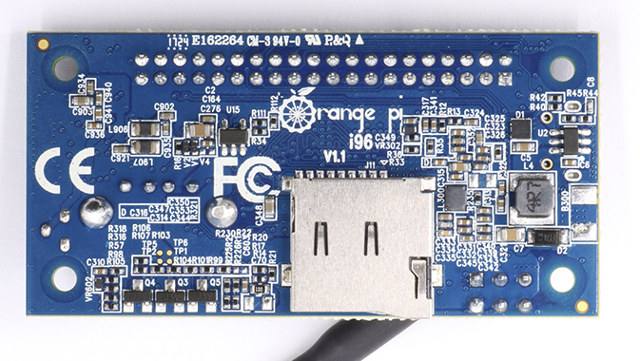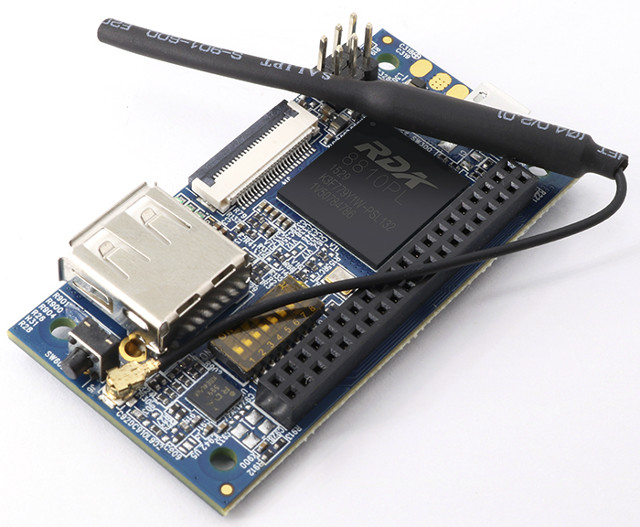Orange Pi i96 board was first unveiled at Linaro Connect US 2016 in September of that year, as one of the first boards compliant with 96Boards IoT Edition specification, and expected to sell for just $9.99. The good news is that the board is now finally available for $8.80 plus shipping on Aliexpress ($12.19 in total in my case)
- SoC – RDA Micro 8810PL ARM Cortex A5 processor @ up to 1.0 GHz with 2Gbit (256 MB) on-chip LPDDR2 RAM, 4Gbit (512 MB) on-chip SLC NAND flash , 256KB L2 cache, and Vivante GC860 3D GPU
- External Storage – micro SD slot
- Connectivity – WiFi 802.11 b/g/n + Bluetooth 2.1/EDR module (RDA5991)
- Camera – MIPI CSI-2 connector for camera sensor up to 5MP
- Video – 1080p30 H.264 encoding
- USB – 1x USB host port, 1x micro USB OTG port
- Expansion – 40-pin GPIO header with SPI, I2C, GPIOs, etc…
- Debugging – 3x pin UART for serial console
- Misc – 8 selection jumpers, power button, power LED, boot selection header
- Power Supply – 5V via micro USB port; optional support for battery power
- Dimensions – 60 x 30 mm as per 96Boards IoT Edition specification
- Certifications – CE and FCC based on the silkscreen
The hardware is a cost-down version of Orange Pi 2G-IoT board without 2G / GSM support, no display interface, no heaphone jack, and a smaller PCB (60×30 mm vs 68×42 mm). The company claims the board supports Android 4.4, Ubuntu, and Debian, and we already have Android SDK with Linux and u-boot source code. Note that the board is not listed on 96Boards IE page yet, and I’d like to remind readers that while 96Boards specifications target both hardware and software, many companies do not comply with the software part of the specifications, and having a 96Boards compliant board does not mean Linaro engineers themselves are working on it. RDA Micro 8810PL processor on development boards is also pretty new, so you can’t expect everything to mostly work out of the box, like you would on Allwinner H3 boards, and for example booting Linux from NAND (Android is OK), and controlling GPIOs may still be an issue at this stage.
 Nevertheless, the price, features, and dimensions of this Linux board could make it an alternative to ESP32 boards such as Wemo LoLin32 for some IoT projects, especially where the RAM and storage might be tight. The board could also be interesting for connected camera applications.
Nevertheless, the price, features, and dimensions of this Linux board could make it an alternative to ESP32 boards such as Wemo LoLin32 for some IoT projects, especially where the RAM and storage might be tight. The board could also be interesting for connected camera applications.
Thanks to theguyuk for the tip.

Jean-Luc started CNX Software in 2010 as a part-time endeavor, before quitting his job as a software engineering manager, and starting to write daily news, and reviews full time later in 2011.
Support CNX Software! Donate via cryptocurrencies, become a Patron on Patreon, or purchase goods on Amazon or Aliexpress





